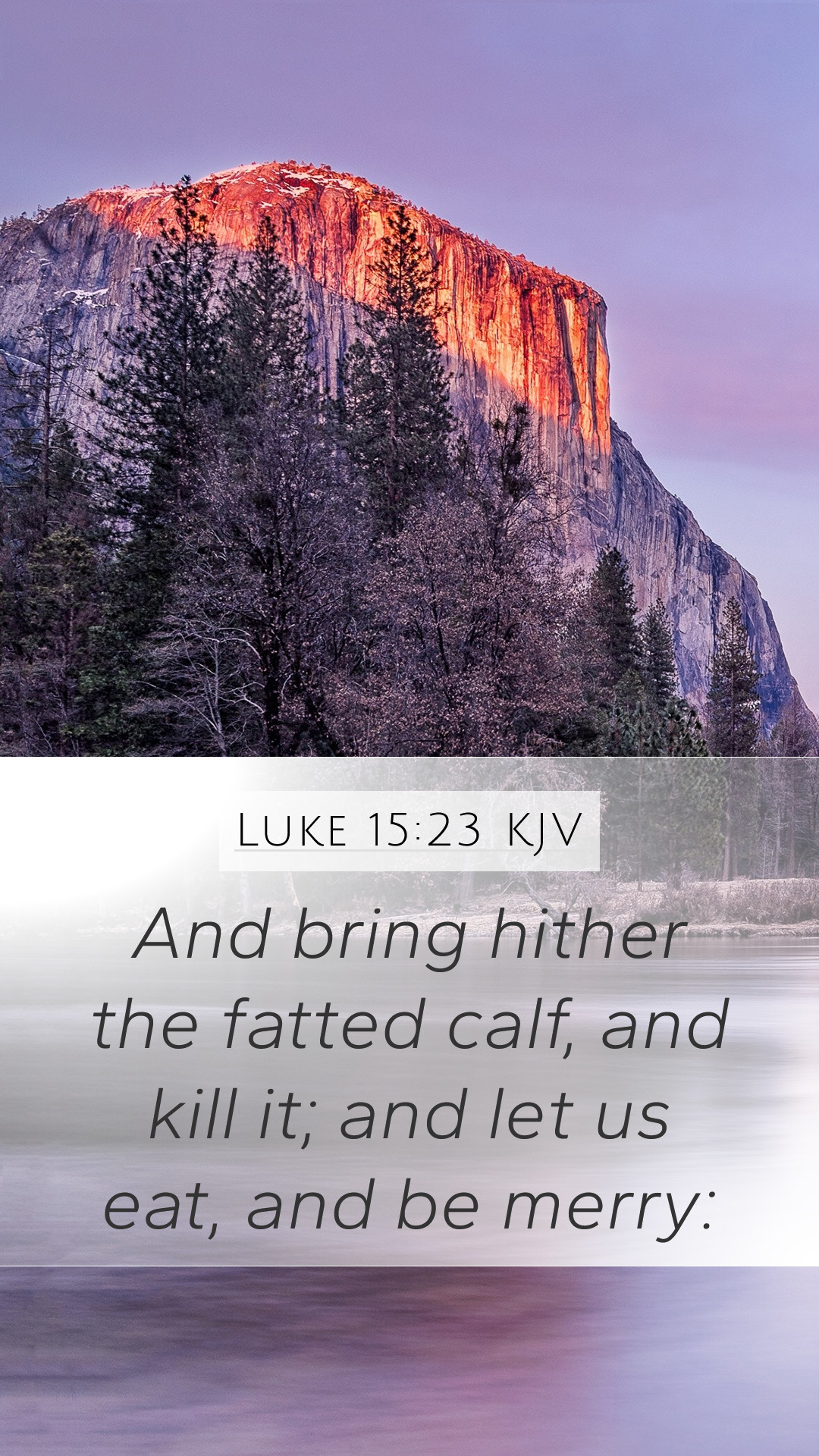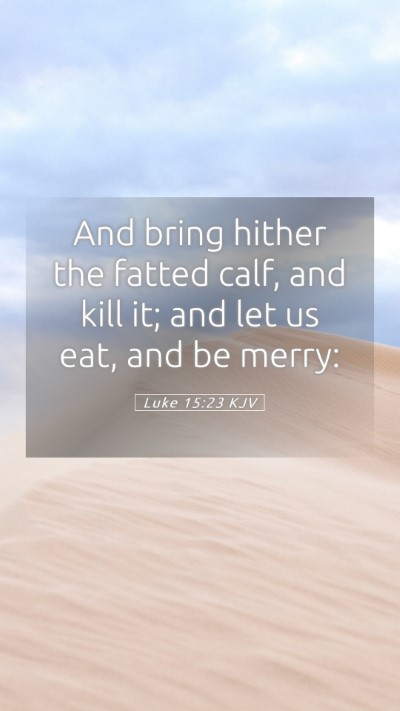Understanding Luke 15:23
Luke 15:23 reads: "And bring hither the fatted calf, and kill it; and let us eat, and be merry:". This verse is part of the Parable of the Prodigal Son, where the father celebrates the return of his lost son. In analyzing this verse, we uncover profound themes related to forgiveness, redemption, and familial love, as highlighted by several respected public domain commentaries including those by Matthew Henry, Albert Barnes, and Adam Clarke.
Biblical Context and Narrative
The Parable of the Prodigal Son is one of Jesus' most famous teachings, found in Luke 15:11-32. This parable illustrates the deep compassion and unconditional love that God has for repentant sinners. The fatted calf symbolizes the joy and festivity that accompanies reconciliation with God.
Summary of Commentary Insights
-
Matthew Henry's Commentary:
Henry emphasizes the mercy and grace exhibited by the father. The act of killing the fatted calf signifies a joyful celebration, symbolizing the abundance of God’s grace. It reflects that in the heavenly realm, there is great rejoicing over one sinner who repents (Luke 15:10). The father’s actions illustrate God’s readiness to forgive and restore those who return to Him, no matter how far they have strayed.
-
Albert Barnes' Commentary:
Barnes notes the significance of the fatted calf as a gesture of complete acceptance. It illustrates that upon repentance, the believer is not only forgiven but also welcomed back into communion with the Father. This celebration is indicative of the joy in the heart of God when a wayward soul repents. The verse encapsulates the joy and restoration that accompanies reconciliation, a theme prevalent throughout the Gospels.
-
Adam Clarke’s Commentary:
Clarke interprets the action of bringing the fatted calf to be slain as a symbol of the great feast and joy in the Kingdom of God. He highlights that the father's actions reflect both love and authority, indicating that the son’s return not only brings personal joy but restores family honor. Clarke stresses that this verse invites believers to rejoice in God’s mercy, reinforcing the importance of familial and community relationships in the faith.
Key Themes in Luke 15:23
-
Forgiveness:
Central to this verse is the theme of forgiveness. The father does not hold the wayward son’s previous actions against him but instead welcomes him with open arms and a celebration. This mirrors God’s forgiving nature towards humanity.
-
Restoration:
The act of killing the fatted calf signifies the restoration of the son’s place in the family. Upon repentance, individuals are fully restored, and their past misdeeds are forgotten, a common biblical principle representing new life in Christ.
-
Joy and Celebration:
The joy expressed in this verse reflects the biblical notion of celebration upon redemption. The gathering for a feast signifies the heavenly celebration that occurs when a sinner repents and returns to God, reinforcing the joyous nature of salvation.
Cross References
To deepen understanding of Luke 15:23, consider the following cross-references:
- Luke 15:10: "Likewise, I say unto you, there is joy in the presence of the angels of God over one sinner that repenteth."
- Isaiah 61:10: "I will greatly rejoice in the Lord, my soul shall be joyful in my God; for he hath clothed me with the garments of salvation."
- Romans 5:8: "But God commendeth his love toward us, in that, while we were yet sinners, Christ died for us."
Application of Luke 15:23
This verse encourages readers to reflect on the nature of their relationships with others and with God. It prompts one to ask how they can embody the father’s spirit of forgiveness and celebration in their own lives.
In studying this passage, believers may consider:
-
How can I extend grace to those who have wronged me, mirroring the father’s response?
-
In what ways can I celebrate the comeback of those who seek reconciliation?
-
How can understanding forgiveness and restoration impact my relationship with God and others?
Conclusion
Luke 15:23 serves as a profound reminder of God’s love and the joy that accompanies redemption. Through the insights of various commentaries, one can gain a deeper understanding of biblical themes related to forgiveness, mercy, and celebration. This verse invites all to reflect on their lives, encouraging believers to embrace repentance and share in the joy that comes from restoration, not only in their own lives but within their communities and family structures.


